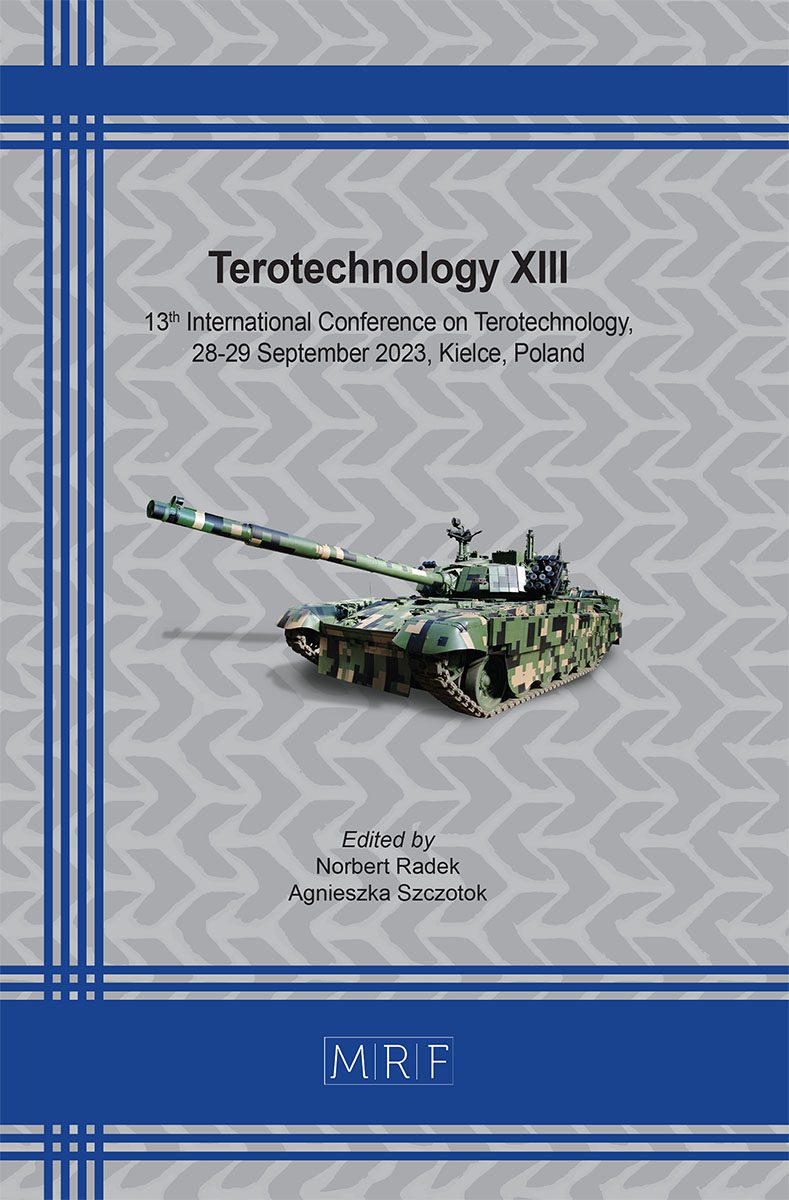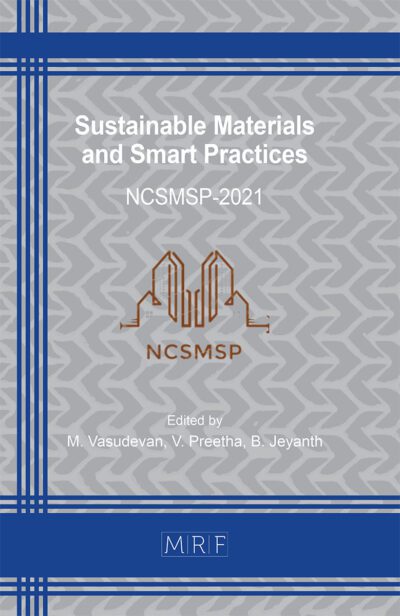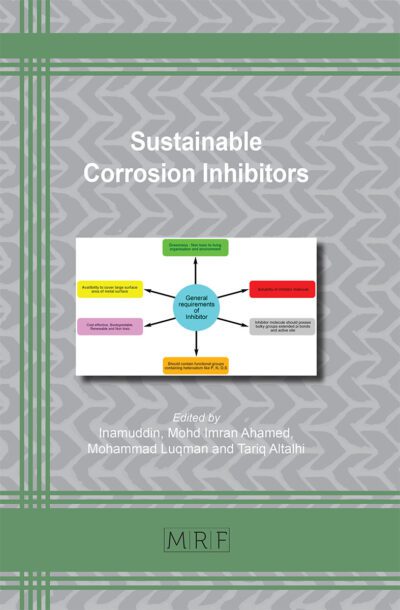–
Corrosion the X2CrNiMoN25-7-4 Super Duplex Stainless Steel in 65% Nitric Acid at Boiling Temperature
LIPIŃSKI Tomasz, PIETRASZEK Jacek, MAZUR Piotr
Abstract. Corrosion of corrosion-resistant steels is a natural phenomenon, but knowing its speed allows you to determine the durability of a structural element. The corrosion rate may depend on the surface condition, which is shaped during the manufacturing process. Thin steels are produced by cold forming, while thick steels are produced by hot forming. Therefore, they have a surface layer with different mechanical, physical and chemical properties. The paper discusses the issue of determining the corrosion rate for cold-rolled and hot-rolled steel. The tests were carried out on samples taken from sheets in the delivered condition. The samples were soaked in 65% nitric acid at boiling point. As a result of the research, it was found that steel produced in the cold rolling process has greater corrosion resistance, especially in the first period of corrosion. This is most likely due to the surface strengthening of the material as a result of cold forming.
Keywords
Stainless Steel, Duplex Steel, Super Duplex Steel, Corrosion, Corrosion Rate
Published online 10/20/2024, 9 pages
Copyright © 2024 by the author(s)
Published under license by Materials Research Forum LLC., Millersville PA, USA
Citation: LIPIŃSKI Tomasz, PIETRASZEK Jacek, MAZUR Piotr, Corrosion the X2CrNiMoN25-7-4 Super Duplex Stainless Steel in 65% Nitric Acid at Boiling Temperature, Materials Research Proceedings, Vol. 45, pp 58-66, 2024
DOI: https://doi.org/10.21741/9781644903315-8
The article was published as article 8 of the book Terotechnology XIII
![]() Content from this work may be used under the terms of the Creative Commons Attribution 3.0 license. Any further distribution of this work must maintain attribution to the author(s) and the title of the work, journal citation and DOI.
Content from this work may be used under the terms of the Creative Commons Attribution 3.0 license. Any further distribution of this work must maintain attribution to the author(s) and the title of the work, journal citation and DOI.
References
[1] www.euro-inox.org / (04.06.2024).
[2] www.outokumpu.com / (04.06.2024).
[3] PN-EN ISO 8044:2002: Korozja metali i stopów. Podstawowe terminy i definicje.
[4] R.N. Gunn (ed.), Duplex Stainless Steels: Microstructure, Properties and Applications, Abington Publishing, Cambridge, United Kingdom, 1997.
[5] T. Lipiński, Corrosion resistance of 1.4362 steel in boiling 65% nitric acid. Manuf. Technol. 16 (2016) 1004-1009. https://doi.org/10.21062/ujep/x.2016/a/1213-2489/MT/16/5/1004
[6] T. Lipiński, Investigation of corrosion rate of X55CrMo14 stainless steel at 65% nitrate acid at 348 K. Prod. Eng. Arch. 27 (2021) 108-111. https://doi.org/10.30657/pea.2021.27.13.
[7] J. Nowacki, Stal duplex i jej spawalność. WNT, Warszawa, 2009.
[8] P. Szabracki, T. Lipiński, Effect of Aging on the Microstructure and the Intergranular Corrosion Resistance of X2CrNiMoN25-7-4 Duplex Stainless Steel, Solid State Phenomena 203-204 (2013) 59-62. https://doi.org/10.4028/www.scientific.net/SSP.203-204.59
[9] M. Wilfor, Duplex steels – a group of high-strength stainless steel grades. Seminar Application of corrosion-resistant steels. Trends, directions, development. Outokumpu (2008).
[10] Properties of stainless steels. Euro Innox. Luksemburg (2002).
[11] Practical Guidelines for the Fabrication of Duplex Stainless Steel. Published by the International Molybdenum Association London (2009).
[12] Y. Park, Z. Lee, The effect of nitrogen and heat treatment on the microstructure and tensile properties of 25Cr–7Ni–1.5Mo–3W–xN duplex stainless steel castings. Materials Science and Engineering A 297 (2001) 78-84. https://doi.org/10.1016/S0921-5093(00)01263-6
[13] T. Lipiński, Corrosion rate of the X2CrNiMoN22-5-3 duplex stainless steel annealed at 500°C. Acta Phys. Pol. A 130 (2016) 993-995. https://doi.org/10.12693/APhysPolA.130.993.
[14] T. Lipiński, The structure and mechanical properties of Al-7%SiMg alloy treated with a homogeneous modifier, Solid State Phenom. 163 (2010) 183-186. https://doi.org/10.4028/www.scientific.net/SSP.163.183
[15] A. Dudek, M. Klimas, Composites based on titanium alloy Ti-6Al-4V with an addition of inert ceramics and bioactive ceramics for medical applications fabricated by spark plasma sintering (SPS method), Materialwissenschaft und Werkstofftechnik 46 (2015) 237-247. https://doi.org/10.1002/mawe.201500334
[16] A. Dudek, B. Lisiecka, N. Radek, Ł.J. Orman and J. Pietraszek, Laser Surface Alloying of Sintered Stainless Steel, Materials 15 (2022) art. 6061. https://doi.org/10.3390/ma15176061
[17] N. Radek, J. Pietraszek and A. Szczotok, Technology and application of electro-spark deposited coatings, METAL 2017 – 26th Int. Conf. Metall. Mater., (2017) 1432-1437.
[18] N. Radek, A. Szczotok, A. Gądek-Moszczak, R. Dwornicka, J. Bronček and J. Pietraszek, The impact of laser processing parameters on the properties of electro-spark deposited coatings, Arch. Metall. Mater. 63 (2018) 809-816. https://doi.org/10.24425/122407
[19] A. Wrońska, A. Dudek, Characteristics of surface layer of sintered stainless steels after remelting using GTAW method, Archives of Civil and Mechanical Engineering 14 (2014) 425-432. https://doi.org/10.1016/j.acme.2013.10.011
[20] N. Radek, J. Pietraszek and J. Konstanty, Operational properties of the cermet electro-spark coatings after laser treatment – technology and application, System Safety: Human – Technical Facility – Environment 1 (2019) 797-804. https://doi.org/10.2478/czoto-2019-0102
[21] N. Radek, J. Pietraszek, M. Radek and O. Paraska, The influence of plasma cutting parameters on the geometric structure of cut surfaces, Mater. Res. Proc. 17 (2020) 132-137. https://doi.org/10.21741/9781644901038-20
[22] N. Radek, J. Pietraszek, J. Bronček and P. Fabian, Properties of Steel Welded with CO2 Laser, Lecture Notes in Mechanical Engineering (2020) 571-580. https://doi.org/10.1007/978-3-030-33146-7_65
[23] A. Gądek-Moszczak, N. Radek, I. Pliszka, J. Augustyn-Nadzieja and Ł.J. Orman, Nano X-ray Tomography Application for Quantitative Surface Layer Geometry Analysis after Laser Beam Modification, Materials 15 (2022) art. 5935. https://doi.org/10.3390/ma15175935
[24] R. Ulewicz, F. Nový and J. Selejdak, Fatigue strength of ductile iron in ultra-high cycle regime, Adv. Mater. Res. 874 (2014) 43-48. https://doi.org/10.4028/www.scientific.net/AMR.874.43
[25] T. Lipiński, J. Pietraszek and A. Wach, Influence of oxygen content in medium carbon steel on bending fatigue strength, Engineering for Rural Development 21 (2022) 351-356. https://doi.org/10.22616/ERDev.2022.21.TF116
[26] E. Augustyn, M.S. Kozień and M. Prącik, FEM analysis of active reduction of torsional vibrations of clamped-free beam by piezoelectric elements for separated modes, Archives of Acoustics 39 (2014) 639-644. https://doi.org/10.2478/aoa-2014-0069
[27] E. Augustyn, M.S. Kozień, Analytical solution of excited torsional vibrations of prismatic thin-walled beams, Journal of Theoretical and Applied Mechanics (Poland) 53 (2015) 991-1004. https://doi.org/10.15632/jtam-pl.53.4.991
[28] A. Goroshko, V. Royzman and J. Pietraszek, Construction and practical application of hybrid statistically-determined models of multistage mechanical systems, Mechanika 20 (2014) 489-493. https://doi.org/10.5755/j01.mech.20.5.8221
[29] A. Wrońska, J. Andres, T. Altamer, A. Dudek and R. Ulewicz, Effect of tool pin length on microstructure and mechanical strength of the FSW joints of Al 7075 metal sheets, Communications – Scientific Letters of the University of Žilina 21 (2019) 40-47.
[30] E. Lisowski, G. Filo, Automated heavy load lifting and moving system using pneumatic cushions, Automation in Construction 50 (2015) 91-101. https://doi.org/10.1016/j.autcon.2014.12.004
[31] J. Takosoglu, Angular position control system of pneumatic artificial muscles, Open Eng. 10 (2020) 681-687. https://doi.org/10.1515/eng-2020-0077
[32] R. Dindorf, J. Takosoglu and P. Wos, Review of Compressed Air Receiver Tanks for Improved Energy Efficiency of Various Pneumatic Systems, Energies 16 (2023) art. 4153. https://doi.org/10.3390/en16104153
[33] R. Ulewicz, Quality management system operation in the woodworking industry, The Path Forward for Wood Products: A Global Perspective – Proc. Sci. Papers (2016) 51-56.
[34] K. Czerwińska, R. Dwornicka and A. Pacana, Improving quality control of siluminial castings used in the automotive industry, METAL 2020 – 29th Int. Conf. Metall. Mater. (2020) 1382-1387. https://doi.org/10.37904/metal.2020.3661
[35] D. Siwiec, R. Dwornicka and A. Pacana, Improving the non-destructive test by initiating the quality management techniques on an example of the turbine nozzle outlet, Mater. Res. Proc. 17 (2020) 16-22. https://doi.org/10.21741/9781644901038-3
[36] R. Dwornicka, The impact of the power plant unit start-up scheme on the pollution load, Adv. Mater. Res. 874 (2014) 63-69. https://doi.org/10.4028/www.scientific.net/AMR.874.63
[37] E. Radzyminska-Lenarcik, M. Ulewicz, The use of the steric effect of the carrier molecule in the polymer inclusion membranes for the separation of cobalt(II), nickel(II), copper(II), and zinc(II) ions, Polish J. Chem. Technol. 17 (2015) 51-56. https://doi.org/10.1515/pjct-2015-0029
[38] T. Kalak, R. Cierpiszewski and M. Ulewicz, High efficiency of the removal process of pb(Ii) and cu(ii) ions with the use of fly ash from incineration of sunflower and wood waste using the CFBC technology, Energies 14 (2021) art. 1771. https://doi.org/10.3390/en14061771
[39] J. Pietraszek, N. Radek and A.V. Goroshko, Challenges for the DOE methodology related to the introduction of Industry 4.0, Prod. Eng. Arch. 26 (2020) 190-194. https://doi.org/10.30657/pea.2020.26.33
[40] J. Pietraszek, A. Goroshko, The heuristic approach to the selection of experimental design, model and valid pre-processing transformation of DoE outcome, Adv. Mater. Res. 874 (2014) 145-149. https://doi.org/10.4028/www.scientific.net/AMR.874.145
[41] J. Pietraszek, A. Gądek-Moszczak and T. Toruński, Modeling of errors counting system for PCB soldered in the wave soldering technology, Adv. Mater. Res. 874 (2014) 139-143. https://doi.org/10.4028/www.scientific.net/AMR.874.139
[42] J. Pietraszek, A. Szczotok and E. Kocyłowska, Factorial approach to assessment of GPU computational efficiency in surrogate models, Adv. Mater. Res. 874 (2014) 157-162. https://doi.org/10.4028/www.scientific.net/AMR.874.157
[43] J. Pietraszek, Fuzzy regression compared to classical experimental design in the case of flywheel assembly, Lecture Notes in Computer Science 7267 LNAI (2012) 310-317. https://doi.org/10.1007/978-3-642-29347-4_36
[44] J. Pietraszek, The modified sequential-binary approach for fuzzy operations on correlated assessments, Lecture Notes in Computer Science 7894 LNAI (2013) 353-364. https://doi.org/10.1007/978-3-642-38658-9_32
[45] J. Pietraszek, L. Wojnar, The bootstrap approach to the statistical significance of parameters in RSM model, ECCOMAS Congress 2016 – Proc. 7th Europ. Congr. Comp. Methods in Appl. Sci. Eng. 1 (2016) 2003-2009. https://doi.org/10.7712/100016.1937.9138
[46] I. Dominik, J. Kwasniewski, L. Krzysztof and R. Dwornicka, Preliminary signal filtering in Self-Excited Acoustical System for stress change measurement, CCC Chinese Control Conference (2013) art. 6640759.
[47] L. Wojnar, A. Gądek-Moszczak and J. Pietraszek, On the role of histomorphometric (stereological) microstructure parameters in the prediction of vertebrae compression strength, Image Analysis and Stereology 38 (2019) 63-73. https://doi.org/10.5566/ias.2028
[48] B. Jasiewicz, J. Pietraszek, S. Duda, S. Pietrzak, B. Pruszczyński, T. Parol, T. Potaczek and A. Gądek-Moszczak, Inter-observer and intra-observer reliability in the radiographic measurements of paediatric forefoot alignment, Foot and Ankle Surgery 27 (2021) 371-376. https://doi.org/10.1016/j.fas.2020.04.015
[49] J. Pietraszek, A. Ga̧dek-Moszczak and N. Radek, The estimation of accuracy for the neural network approximation in the case of sintered metal properties, Studies in Computational Intelligence 513 (2014) 125-134. https://doi.org/10.1007/978-3-319-01787-7_12
[50] J. Pietraszek, R. Dwornicka, M. Krawczyk and M. Kołomycki, The non-parametric approach to the quantification of the uncertainty in the design of experiments modelling, UNCECOMP 2017 – Proc. 2nd Int. Conf. Uncert. Quant. Comp. Sci. Eng. (2017) 598-604. https://doi.org/10.7712/120217.5395.17225
[51] M. Radek, A. Pietraszek, A. Kozień, K. Radek and J. Pietraszek, Matching Computational Tools to User Competence Levels in Education of Engineering Data Processing, Mater. Res. Proc. 34 (2023) 453-459. https://doi.org/10.21741/9781644902691-52
[52] S. Borkowski, M. Ingaldi, Workers evaluations of ribbed wire competition and rolling mill technological possibilities, METAL 2013 – 22nd Int. Conf. Metall. Mater. (2013) 1920-1925.
[53] M. Ingaldi, S.T. Dziuba and A. Cierniak-Emerych, Analysis of problems during implementation of Lean Manufacturing elements, MATEC Web of Conf. 183 (2018) art. 1004. https://doi.org/10.1051/matecconf/201818301004
[54] R. Ulewicz, M. Mazur and F. Novy, The impact of lean tools on the level of occupational safety in metals foundries, METAL 2019 – 28th Int. Conf. Metall. Mater. (2019) 2013-2019.
[55] PN-EN ISO 3651-1 Determination of resistance to intergranular corrosion of stainless steels — Part 1: Austenitic and ferritic-austenitic (duplex) stainless steels – Corrosion test in nitric acid medium by measurement of loss in mass (Huey test).














